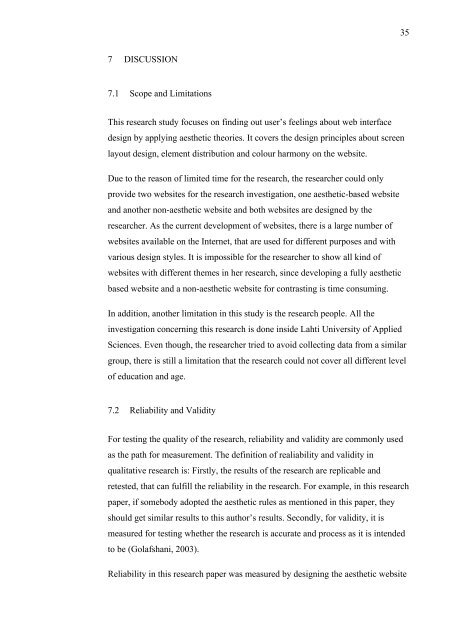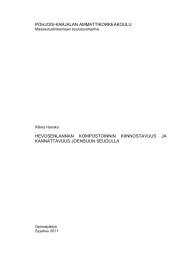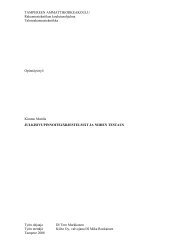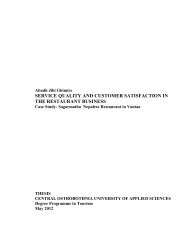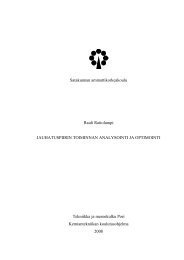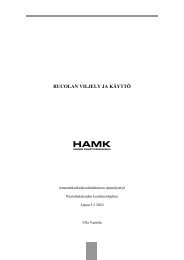user interface design by applying theories of aesthetics - Theseus
user interface design by applying theories of aesthetics - Theseus
user interface design by applying theories of aesthetics - Theseus
Create successful ePaper yourself
Turn your PDF publications into a flip-book with our unique Google optimized e-Paper software.
35<br />
7 DISCUSSION<br />
7.1 Scope and Limitations<br />
This research study focuses on finding out <strong>user</strong>’s feelings about web <strong>interface</strong><br />
<strong>design</strong> <strong>by</strong> <strong>applying</strong> aesthetic <strong>theories</strong>. It covers the <strong>design</strong> principles about screen<br />
layout <strong>design</strong>, element distribution and colour harmony on the website.<br />
Due to the reason <strong>of</strong> limited time for the research, the researcher could only<br />
provide two websites for the research investigation, one aesthetic-based website<br />
and another non-aesthetic website and both websites are <strong>design</strong>ed <strong>by</strong> the<br />
researcher. As the current development <strong>of</strong> websites, there is a large number <strong>of</strong><br />
websites available on the Internet, that are used for different purposes and with<br />
various <strong>design</strong> styles. It is impossible for the researcher to show all kind <strong>of</strong><br />
websites with different themes in her research, since developing a fully aesthetic<br />
based website and a non-aesthetic website for contrasting is time consuming.<br />
In addition, another limitation in this study is the research people. All the<br />
investigation concerning this research is done inside Lahti University <strong>of</strong> Applied<br />
Sciences. Even though, the researcher tried to avoid collecting data from a similar<br />
group, there is still a limitation that the research could not cover all different level<br />
<strong>of</strong> education and age.<br />
7.2 Reliability and Validity<br />
For testing the quality <strong>of</strong> the research, reliability and validity are commonly used<br />
as the path for measurement. The definition <strong>of</strong> realiability and validity in<br />
qualitative research is: Firstly, the results <strong>of</strong> the research are replicable and<br />
retested, that can fulfill the reliability in the research. For example, in this research<br />
paper, if somebody adopted the aesthetic rules as mentioned in this paper, they<br />
should get similar results to this author’s results. Secondly, for validity, it is<br />
measured for testing whether the research is accurate and process as it is intended<br />
to be (Golafshani, 2003).<br />
Reliability in this research paper was measured <strong>by</strong> <strong>design</strong>ing the aesthetic website


